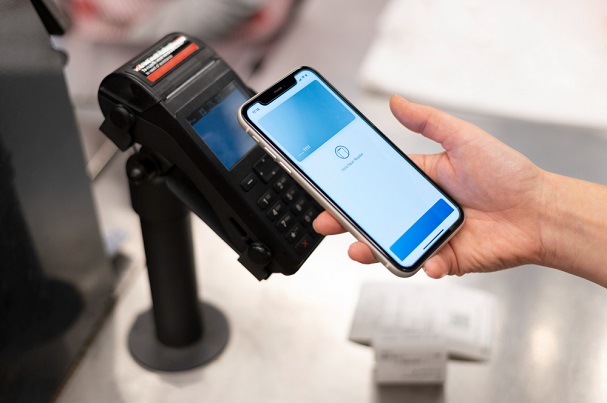
Did you know that nearly 60% of restaurant owners, retailers, and other businesses experience challenges when transitioning to a new payment processing system? This can have a significant impact on customer service. Changing from an old, legacy POS system to a modern, hybrid one like Shopify POS can be daunting for retail businesses.
With proper planning and preparation, you can ensure a seamless transition that minimises disruption and maximises efficiency in routine tasks. By managing your time effectively and utilising a reliable service, you can follow this guide to streamline your workflow.
Finding the Right POS: Learning and Timeline Sketching

To ensure a smooth transition for retailers to a new point of sale (POS) software system, it’s crucial to find the right one that meets the needs of your business and customers. Here are some steps to make the service process at your store easier and save time for your customers.
Research Different POS Options
Start by researching and exploring different POS options for retail businesses and restaurants. This will help retailers find the best solution for their retail staff. Look for service providers that offer software features and functionalities tailored to retailers and restaurant business requirements.
Consider cost, scalability, ease of use, and compatibility with your current systems when selecting software. Consider the time and service required for implementation and the impact on legacy systems.
Create a Timeline for Implementation
Once you’ve identified potential software providers for your Point of Sale (POS) system, create a timeline outlining critical milestones for implementing the new legacy system. This will help your staff stay organised and ensure a smooth transition to the upgraded service.
This software will help your staff stay organised and ensure a smooth transition without disrupting daily operations. It is designed to improve service and handle legacy systems efficiently.
Take Advantage of Free Trials or Demos
Before deciding on restaurant software, take advantage of free trials or demos offered by restaurant POS providers to assess its functionality and suitability for your staff and toast needs. This allows restaurant staff to test potential software solutions firsthand and determine if they meet your business requirements, such as improving toast quality.
By following these steps, you can find the right software for your restaurant staff’s needs while minimising disruptions during the transition process. Whether you need a POS system or software for managing orders and payments, these steps will help you find the perfect solution.
Remember, when selecting restaurant software, it’s essential to research different options for your staff thoroughly. Create a timeline and take advantage of free trials or demos before making a final decision on the toast software for your restaurant.
Overcoming Inventory Management Limitations

Identify Common Challenges
Managing inventory can be a real pain in the neck, especially when your restaurant staff is stuck with outdated software and a point of sale (POS) system that needs to toast properly. Let’s take a moment and identify the common inventory management challenges that restaurant staff often face with their current software systems. From online ordering software to keeping track of sales data and managing restaurant inventory levels, several limitations can hinder your retail business’s growth. The toast staff is essential for efficient operations.
Upgrade to a New POS System
Now that we’ve identified the limitations of the current restaurant software, it’s time to explore how upgrading to a new POS system can help overcome these challenges. By investing in better software, staff can efficiently manage orders and payments, ensuring every customer receives prompt service. With this new system, we can also streamline the process of making toast, saving time and improving overall efficiency in the kitchen.
Look for features like real-time inventory tracking and automated replenishment in potential new software systems for restaurant staff. This software can make your life easier by providing accurate information about stock levels for restaurant staff and ensuring timely restocking of toast.
Plan Ahead for Data Migration
One crucial aspect of transitioning to a new software POS system is planning ahead for data migration from your old inventory management system. This is important to ensure a smooth transition and minimise disruptions for your restaurant staff.
This step is vital to ensure seamless software integration into your restaurant operations and prevent any disruptions in your toast. Ensure you have a clear plan for transferring all your sales data, orders, and item information from the old restaurant system to the new one.
Seamless Integration Is Key
When selecting a new POS system for your restaurant, prioritise finding one that seamlessly integrates with your existing restaurant processes and workflows. This will save you from headaches and ensure a smooth transition in your restaurant.
When choosing software or hardware for your restaurant, it is essential to consider factors such as compatibility with other restaurant systems you use in your store.
By addressing these key points – identifying challenges, upgrading to a new POS system with advanced features, planning ahead for data migration, and prioritising seamless integration -you’ll be well on your way to overcoming inventory management limitations that might have been holding back your retail business.
Knowing When to Switch POS Providers: Red Flags and Demo Comparisons

Limited Functionality and Ease of Use
If your current POS system lacks essential features or is challenging to navigate, it might be time for a change. Compare demos from different providers to assess which one offers better functionality and ease of use.
Poor Customer Support
Dealing with unresponsive or unreliable customer support can be frustrating and detrimental to your business. Consider switching to a POS provider that offers prompt and helpful customer support.
Expensive Pricing Structure
If high fees, hidden charges, or inflexible pricing plans constantly burden you. Look for a provider with transparent pricing structures that align with your budget and business needs.
Lack of Integrations
In today’s interconnected world, seamless integration with other software systems is essential. It may hinder your business growth if your current POS provider doesn’t offer integrations with crucial tools like accounting software or e-commerce platforms.
To evaluate potential new providers effectively, compare their demos side by side. Look for providers who address the red flags you’ve identified in your current system while offering additional benefits such as:
- Robust functionality
- User-friendly interface
- Responsive customer support
- Transparent pricing structure
- Extensive integration options
Consulting with other businesses or industry experts can also provide valuable insights into reliable POS providers they have succeeded with.
By recognising the red flags indicating the need for a switch and comparing demos from different providers, you can ensure a smooth transition to a new POS system that meets your business requirements.
Third-Party Payment Processors

Understanding third-party payment processors
Third-party payment processors are alternative methods of handling payments that differ from traditional payment methods. They act as buyer and seller intermediaries, facilitating secure online transactions.
Advantages and disadvantages of using third-party payment processors
Using third-party payment processors has its pros and cons. Here’s a breakdown:
Pros:
- Convenience: These processors offer easy integration into websites or apps, making it simple for businesses to accept payments.
- Security: Reputable third-party processors implement robust security measures, protecting sensitive customer data.
- Expanded reach: By accepting multiple forms of payment, businesses can attract a broader range of customers.
Cons:
- Fees: Third-party processors charge transaction fees, which can eat into profits for small businesses.
- Limited control: Businesses may have limited control over these platforms’ checkout process and branding.
- Potential holdbacks: Some processors may hold funds for a certain period or in case of disputes.
Popular options available in the market
You have several options available:
- PayPal: A widely recognised platform that offers secure transactions and easy integration.
- Stripe: Known for its developer-friendly tools and customisable checkout experiences.
- Square: Ideal for small businesses with features like point-of-sale systems and online payment options.
Remember, it’s essential to research and compare different providers to find the one that best suits your business needs.
Training Staff on the New POS System
You must train your staff effectively to ensure a smooth transition to a new ePOS system. Here are some steps you can take to make sure they’re familiar with the new system:
Develop a comprehensive training plan
Create a detailed training plan that covers all aspects of the new POS system. This plan should include both theoretical and practical training sessions.
Conduct direct training sessions
Hold direct training sessions where you teach your employees how to use the various features of the new POS system. Ensure these sessions are interactive and hands-on so your staff can actively participate and learn.
Organise practice sessions
In addition to direct training, organise practice sessions where your staff can gain hands-on experience using the new POS system. Encourage them to try different scenarios and simulate real-life situations they may encounter while using the system.
Provide ongoing support and resources
Transitioning to a new POS system can be challenging for some employees. To ease this process, provide ongoing support and resources such as user manuals, video tutorials, or an internal help desk. Ensure that someone is always available to address your team’s questions or concerns.
By following these steps, you can ensure that your staff feels confident in using the new POS system. Remember, practical training plays a vital role in maximising productivity and minimising errors during this transition period.
Achieving a Smooth Transition
You’ve completed the essential steps to smoothly transition to your new point of sale (POS) system. By now, you have learned about finding the right POS, overcoming inventory management limitations, recognising red flags in your current provider, and training your staff on the new system. You’re well-prepared to embrace this change and advance your business.
But remember, transitioning to a new POS is not just about the technical aspects; it’s about embracing a mindset shift. Embrace this opportunity for growth and improvement, and be bold and adapt as you go. Keep an open mind and be ready to troubleshoot any hiccups that may arise during the process. With determination and perseverance, you’ll soon reap the benefits of your smooth switch.
. Embrace this transition as an opportunity for growth and improvement in your operations. Good luck on your journey towards achieving seamless transactions and enhanced customer experiences!
Best POS software











